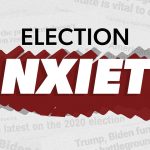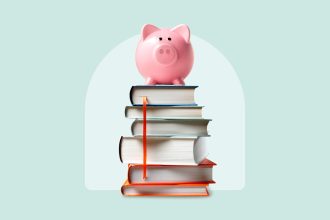Nora Carol Photography/ Getty Images; Illustration by Austin Courregé/Bankrate
Interest rate hikes by the Federal Reserve have pushed bond yields near levels not seen in more than a decade. But following the Fed’s decision to cut interest rates by 50 basis points in September 2024, should investors be looking to increase or decrease their bond exposure?
How will lower interest rates impact bonds?
For most of the past 15 years, interest rates have hovered near historical lows. The Fed cut interest rates following the 2008 financial crisis and inflation remained muted, which allowed the Fed to keep rates at low levels.
When the Covid-19 pandemic hit the economy in March 2020, the Fed again followed a similar playbook: cut interest rates to stimulate the economy. By August 2020, the 10-year Treasury yield sat close to 0.50 percent.
But as the economy recovered from the pandemic shock, inflation also picked up steam. By March 2022, when the Fed first began to raise interest rates, inflation had reached 8.5 percent, according to Department of Labor data. In an attempt to slow the economy and combat high inflation, the Fed raised interest rates at a swift pace, bringing its key rate to roughly 5.3 percent as of Sept. 17, 2024.
The rise in rates hurt bond prices throughout 2022, with the Bloomberg U.S. Aggregate Bond Index falling 13 percent for the year, the worst bond performance in decades. Bond prices and yields move in opposite directions, meaning prices fall as yields rise, and vice versa.
But after the first rate cut in over four years — and more expected in the coming months — some investors may still be able to take advantage of an investment opportunity in bonds that hasn’t existed for some time. However, that opportunity may not last long.
Is now a good time to buy bonds?
Many investors have been reluctant to hold bonds for years due to the low interest rate environment, but that should no longer be the case, says Greg McBride, chief financial analyst at Bankrate.
“Even with interest rates coming down, bond yields are still high enough to be appealing to investors,” McBride notes.
High-quality bonds offer investors coupon income that’s predictable and consistent without the price volatility of riskier assets, so bonds provide a great diversification benefit, says McBride.
Despite the recent rate cut, now is still a good time to buy bonds, according to Ryan Linenger, a Chicago-based financial advisor with Plante Moran.
“High-quality bonds offer attractive yields today compared to the extremely low-rate environment we were in just a couple years ago,” Linenger says.
Bonds don’t have the same potential long-term returns as stocks, but high-quality bonds tend to be much less volatile. Buying bonds now can lower overall portfolio risk without sacrificing much in the way of returns.
“With equity markets at or near all-time highs, some rebalancing could be prudent,” says Linenger, while acknowledging that allocation decisions always depend on the needs, cash flows and financial plan of the individual client.
Investors can expect short-term yields to decrease more rapidly than long-term yields in the coming months, so locking in longer-duration bonds may still be appealing.
It’s a narrow opportunity, though, because additional rate cuts are looming large on the horizon.
“Act sooner rather than later, as yields won’t get better by waiting,” says McBride.
Bottom line
Ultimately, the decision on whether or not to hold bonds and in what amount will depend on the unique circumstances of each individual investor. But the rise in interest rates has made bonds more attractive than they’ve been in over a decade. The Fed may have cut interest rates in September, with more cuts likely in the months ahead, but longer-term bonds still present an opportunity for investors to lock in yields before rates drop even lower.
— Bankrate’s Rachel Christian contributed to an update of this story.
Read the full article here














